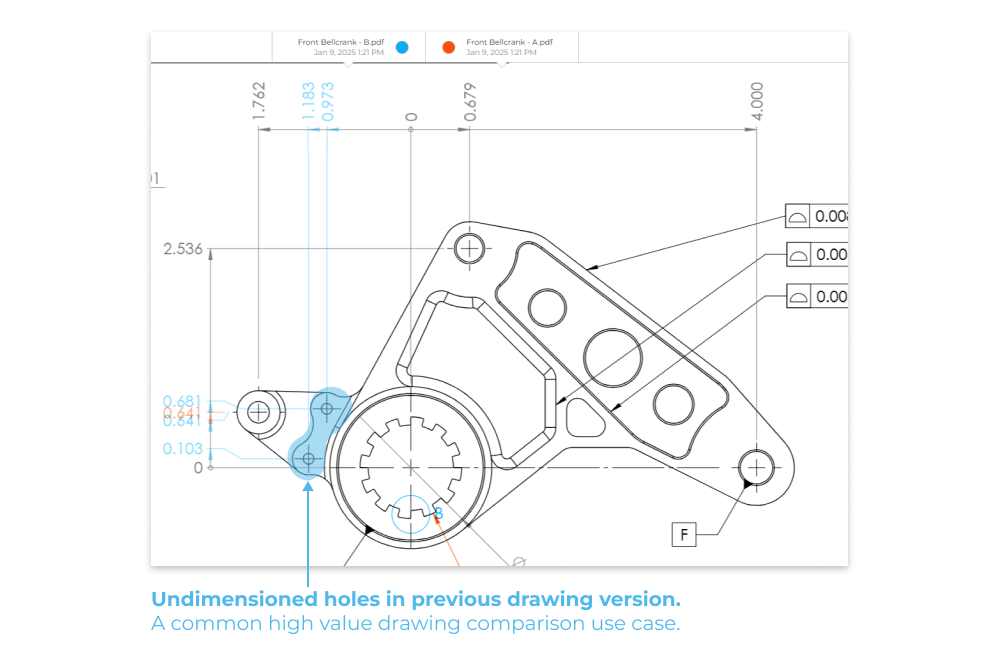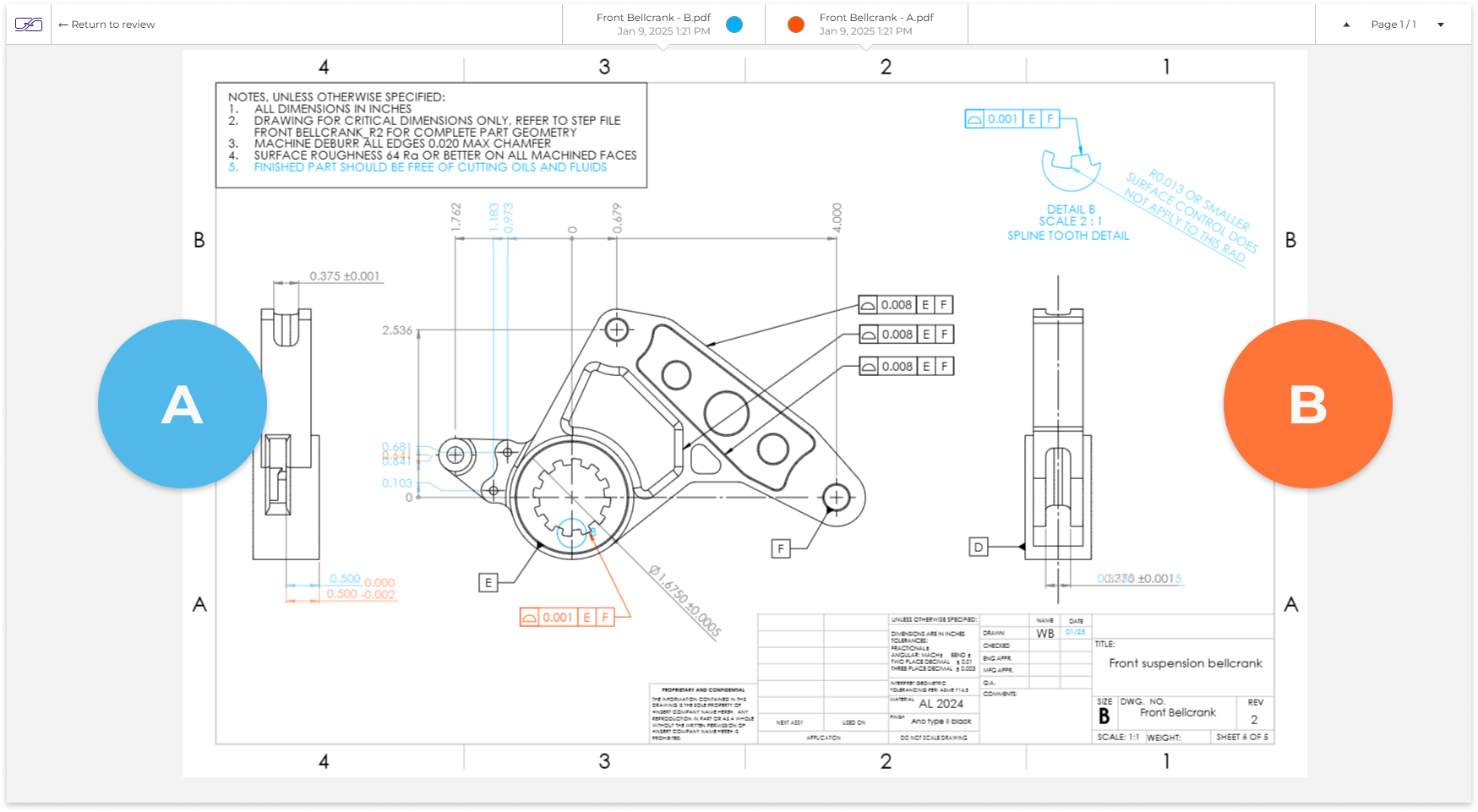TL;DR: We have an awesome new drawing diff tool to help you catch stupid or subtle mistakes across drawing versions through clear visual comparison.
Why Compare Engineering Drawings?
When I’m working through a drawing for a machined part for example, I almost always make a few mistakes. That’s why I typically have a coworker take a look at it at the very least. Usually they find the big, ugly, and (in hindsight) obvious mistakes that I made. But rarely do they find the more insidious or subtle drawing mistakes - errors of degree and omission.
If you’ve made any drawings you know what I’m talking about:
- missing dimensions
- fat fingered tolerances (extra decimal or missing decimal place anyone?!)
- missing bubble callouts on assembly views
- BOM updates that don’t match assembly views
- missing revision number or letter

In this article I want to encourage you to add a bit of rigor to your process, and to do so with a tool we just rolled out - the Five Flute Drawing Diff Tool. It’s a very easy way to compare arbitrary drawings, see what has been added or removed across two versions, and to make sure things look right before you release to manufacturing.
In the rest of this article I’m going to highlight some of the use cases where this tool can be helpful, show you how it works, and that’s pretty much it!
The Challenge of Manual Drawing Review
Every experienced engineer has encountered the tedious task of comparing drawing revisions. Whether it's comparing a supplier's manufacturing drawings against original specifications, reviewing design changes from a colleague, or validating that assembly documentation matches the latest revision, the process traditionally involves careful side-by-side comparison of documents. This manual process is not only time-consuming but also susceptible to human error, especially when dealing with subtle changes across complex drawings.
Introducing - The Five Flute Drawing Diff Tool
You can check out the free version of the tool yourself with this example drawing diff.
I also have a cool video walk through that explains how the UI works in detail.
It lets you upload 2 PDF drawings, highlight the differences in controllable colors, and quickly understand exactly what has changed, no matter how subtle. We made this public version for you to test out and we also integrated this functionality directly in Five Flute.

Best Use Cases and When to Use the Five Flute Drawing Diff Tool
The obvious answer here is to use a diff tool whenever you are doing a drawing review where multiple versions of a drawing end up being created. That said, here’s where I find this type of detailed diffing and comparison most helpful.
- Critical tolerance updates, especially for press and interference fits.
- BOM update checks. If you see an updated BOM or a new line item, is there a corresponding bubble callout on any of the assembly views?
- Revision checking. Did the new drawing necessitate an up-rev? It’s nice to double check before release.
- Typos. A generally helpful catch-all for drawings being updated hastily before release.
- Work instruction sequence changes. Though not the typical use case, any document with a super boring list that must be compared to another super boring list is a perfect candidate.
Practically speaking this means employing a drawing diff tool during your normal review process. From a process perspective I find the diffing to be most helpful when double checking ECOs, doing small but sometimes cascading changes for sustaining engineering, and to add that last little comforting bit of rigor to manufacturing documentation updates, especially around assembly. Your mileage may vary, but its worth it to catch even a single critical manufacturing mistake before you’ve wasted time and money.
Try it yourself, its free!
Give it a go and let us know what you think!
You can poke around with the free version here, or just create a Five Flute account and start reviewing and marking up drawings right now.
Thanks enginerds!
